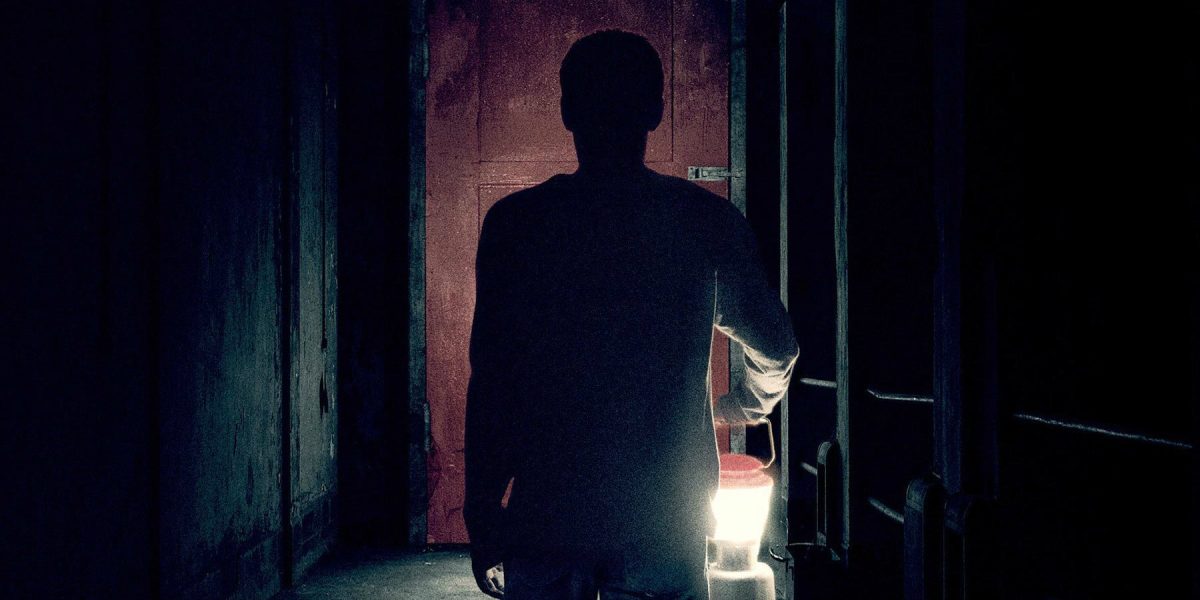 (2.5 / 5)
(2.5 / 5)
Why lay the table for a feast if you’re not going to serve a meal that can complete with the place setting?
It’s this shortcoming that ultimately prevents It Comes At Night from becoming more than just another addition to the, in recent years, surprisingly well-worn genre of post-apocalyptic drama-horror.
Written and directed by twenty-eight year-old Trey Edward Shults, the film, like his 2014 debut, Krisha, addresses a self-contained family affair – albeit under somewhat different circumstances.
Teenager Travis (Kelvin Harrison Jr.) lives with his dad Paul (Joel Edgerton), mum Sarah (Carmen Ejogo)1, and retriever Stanley in an isolated cabin2 in the woods somewhere in upstate New York. Only venturing out in the daytime, they live in fear of the unknown contagion that has, off-screen, seemingly devastated society. In the opening scene of the film, Paul performs a mercy killing on his infected father-in-law Bud (David Pendleton)3 and they communally burn the body in a shallow grave out in the woods.
Travis dreams of his granddad, monstrous in sickness: strained breathing, exposed ribs, inky pupils, oil seeping from his mouth.4 It seems like an unpleasant fate; even if the relationship between this vision and whatever supposedly comes at night is left uncertain. Travis also dreams of a darkened, wood-paneled corridor that leads to a red door.5
This red door leads to the plastic-sheeted, annexed room in which Paul dealt with Bud; which also serves as the only entryway into the cabin. It’s here they discover an intruder banging around. The intruder, Will (James Whites‘ Christopher Abbott), claims that he thought the place was abandoned – the windows are all blacked out. He also claims to have a family, a wife and young son, and what’s more, food.6
After a short, eventful road-trip, this new family7 – which consists of Will, his partner Kim (Riley Keough), and their young son Andrew (Griffin Robert Faulkner), as well as a goat and assorted chickens 8 become part of the household. That evening over dinner, Paul gently but firmly lays out the ground rules – to which Will and Kim gratefully agree.9
It Comes At Night has little interest in a power play between the two families, suddenly forced into reasonably close conjunction10. Instead it chooses to look at the tragedy that plays out when otherwise reasonable people find themselves in a situation where the need to protect their own outweighs any shared humanity.
The film’s two best scenes occur between Travis and Kim11 and Paul and Will.12 As well as being subtly characterful, the former introduces a note of sexual awkwardness13 and the latter one of general mistrust.14 Neither of these potential sources of tension are ever referred to again.
Everything seems ready for a thematic smorgasbord – family, society, gender, sexuality, even race15 – but It Comes At Night is too committed to the broader theme of humanism to delve into particulars. In being sensitive to the potential pitfalls of playing into genre16, Shults never ties these disparate threads together in a satisfying way. As such, the sense of dread never builds beyond the situational.
This is moody, minimalist film-making17 and undeniably effective in some regards. It’s also the sort of film where you walk out and immediately begin brainstorming how it could quickly have been improved.18 It Comes At Night, while perhaps intellectually worthy,19 leaves you with little to digest, dramatically-speaking. There’s just not enough to chew on to make up for the dearth of incident.
- Surname unknown.
- “Cabin” may be too picturesque. It’s more of a large, multi-storey wooden house.
- The film never really explores the emotional fallout from this; especially from Sarah. Maybe they’re numb from disposing of other sickly relatives, but it does feel strangely muted.
- It’s a zombie-like image but in which the threat is existential as opposed to immediately physical.
- These dreams perhaps represent a desire to escape the bonds of family, which Travis perhaps knows subconsciously must lead to violence. The film demands you read a lot into it; not always rewardingly.
- It’s made clear that Travis, Paul, and Sarah somehow have plenty of water, but are low on rations, which is strange given their meal portions look meager but not exactly subsistence level. Maybe they’re just thinking slightly longer-term.
- Surname also unknown.
- Housing situation unknown.
- They just honestly seem glad to be there and that doesn’t change greatly.
- The house is too large to be truly claustrophobic.
- Reminiscing in the kitchen over foods they miss.
- Sharing a drink in the study.
- Travis is a teenage boy; Kim is Riley Keough.
- Paul inadvertently catches Will out in a possible lie – or at least inconsistency.
- Paul and Sarah are a mixed-race couple.
- Travis’ listening in to the rest of the house’s occupants from the attic could seem like tiresome sub-Hitchcockian voyeurism, but instead it becomes something rather sweet.
- The cinematography, for instance, recalls theological horror The Witch.
- In that regard it’s a little like Passengers; any further comparison with which would be richly undeserved (and unwanted).
- Shults reportedly took inspiration from Joshua Oppenheimer’s documentary about Indonesian death squads, The Act Of Killing.
